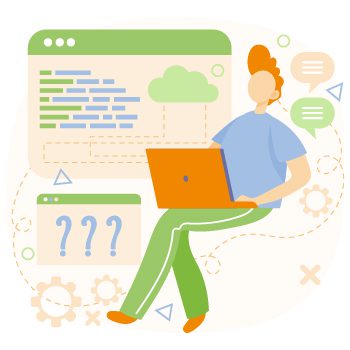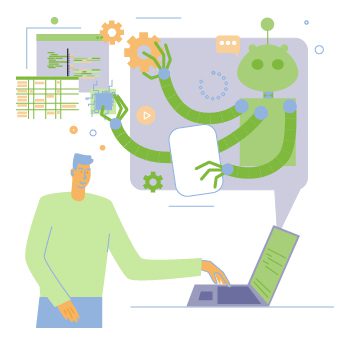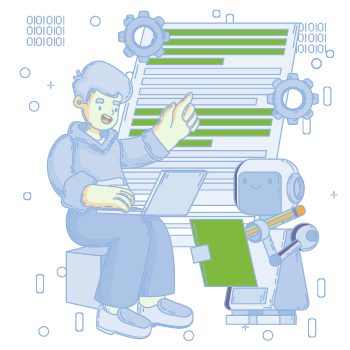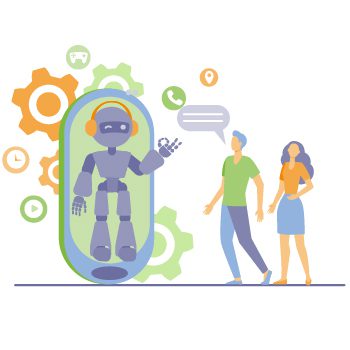
Are Mandarin-to-English machine translations worth it?
What are Mandarin-to-English machine translations?
Mandarin-to-English machine translations use artificial intelligence and computer algorithms to automatically convert written text from Mandarin Chinese to English. These machine translations utilize sophisticated language processing techniques to analyze the input text’s grammatical structure, vocabulary, and context and then generate an equivalent translation in English.
The technology behind Mandarin-to-English machine translations has evolved rapidly in recent years, making significant strides in accuracy and speed. By harnessing the power of machine learning and big data, these translation systems can learn from vast amounts of language data to continuously improve their performance. In real-time, they are designed to handle various text types, including documents, websites, and conversations.
One of the critical advantages of Mandarin-to-English machine translations is their efficiency. Unlike human translators, machine translations can provide instant results, which may take hours or even days to translate a document. This can be particularly useful when time is of the essence, such as in business negotiations or emergencies.
Furthermore, Mandarin-to-English machine translations are often more cost-effective than hiring human translators. Professional translation services can be expensive, especially for large volumes of text. By using machine translations, individuals and businesses can save time and money while obtaining reasonable accuracy in their translations.
However, while Mandarin-to-English machine translations have made significant advancements, they are not flawless. The complexity of languages, cultural nuances, and context-specific meanings can still challenge machines. Additionally, errors and inaccuracies can occur, especially with idiomatic expressions or technical jargon. Reviewing and editing machine translations is essential to ensure their reliability.
The following sections will explore the pros and cons of using Mandarin-to-English machine translations, factors affecting their accuracy, alternative translation methods, and whether human translators or machines are better suited for Mandarin-to-English translations.
Read more about the Human translation, which is still reliable.


The pros of using Mandarin-to-English machine translations
Mandarin-to-English machine translations offer numerous advantages that make them worth considering. First and foremost, these translations are incredibly efficient. Unlike human translators, machines can provide instant results and require time to review, understand, and translate text. This is particularly beneficial in time-sensitive situations, such as urgent business negotiations or emergencies where immediate communication is crucial.
Chinese Translation Services, particularly machine translations, offer a quick solution for Mandarin-to-English conversions. For standard language and common phrases, machines can provide a correct answer quickly, benefiting Chinese speakers seeking fast comprehension. Mandarin-to-English machine translations may expedite processes in fields like business or document translation. However, when dealing with complex technical content or nuanced Chinese writing, technical translators’ involvement is advisable to convey structural and machine elements accurately. Despite these advantages, considering the official language requirements and potential limitations, a balance between human expertise and machine efficiency remains crucial.
Another significant advantage is cost-effectiveness. Professional human translation services can be expensive, especially for large volumes of text. By using machine translations, individuals and businesses can save time and money while obtaining reasonable accuracy. This accessibility allows more people to access and understand Mandarin content, facilitating cross-cultural communication and expanding business opportunities.
Moreover, machine translations can handle various text types, from documents to websites and even real-time conversations. This versatility ensures that Mandarin content can be quickly and accurately translated into English across multiple mediums.
Although Mandarin-to-English machine translations may not be perfect, they have made significant advancements in accuracy and can provide a solid foundation for understanding Mandarin content. With careful review and editing, machine translations can produce reliable results for many purposes.
The cons of using Mandarin-to-English machine translations
While Mandarin-to-English machine translations offer numerous benefits, some drawbacks must be considered. One major limitation is the potential for inaccuracies and errors in the translations. Despite advancements in machine learning, machines may struggle to accurately capture the nuanced meanings, cultural context, and idiomatic expressions in Mandarin. This can result in mistranslations that can be misleading or even offensive. Additionally, machines may not be able to fully understand the specific domain or industry terminology, leading to incorrect translations in technical or specialized fields.
Another issue with machine translations is the lack of human intuition and understanding. Human translators can consider a text’s overall context and tone, making subjective judgments and adaptations when necessary. On the other hand, machines lack this intuitive understanding and may produce grammatically correct translations that do not convey the intended meaning.
Other issues are evident in technical domains like academic translation, especially when dealing with complex machines and mechanisms. TheWayback Machine may struggle with the intricacies of flexure, planar, and spatial mechanisms, leading to inaccuracies in conveying the structural elements and mechanical components. The nuances of robotic systems, control movement, and straight-line movement may be lost in translation, impacting the understanding of control systems. In contrast, human translators, particularly those specialized in technical fields like machinery or business translation, are better equipped to handle the subtleties of the Chinese language, ensuring a more precise and contextually appropriate result.
The cons of relying on Mandarin-to-English machine translations become evident when dealing with technical content involving the assembly of components, rotary input, actuator input, operators with machinery, a Difference engine, spherical mechanism, and linear movement. Machines may struggle to accurately convey the intricacies of these concepts, leading to potential misunderstandings and errors in communication, especially in contexts where precision is crucial, such as engineering or machinery operations. In such cases, relying on human translators with expertise in technical fields becomes essential to ensure a clear and accurate understanding of the content.
Furthermore, machine translations can struggle with preserving the stylistic elements of the original text. This is particularly important in creative or literary works where the tone, word choice, and overall style play a significant role in the reader’s experience. Machine translations may fail to capture these nuances, losing the original artistic expression.
In summary, while Mandarin-to-English machine translations offer speed and cost-effectiveness, their limitations in accuracy, understanding of cultural context, and preservation of style make them less suitable for specific scenarios. It is essential to carefully review and edit machine translations to ensure their reliability and to consider alternative methods, such as human translators, for more complex or nuanced translations.


Factors that can affect the accuracy of Mandarin-to-English machine translations
When using Mandarin-to-English machine translations, several factors can impact their accuracy. One crucial factor is the quality and size of the training data used to develop the translation algorithms. If the training data is limited or of poor quality, the machine translations may not be as accurate or reliable. Additionally, the complexity and ambiguity of the source text can affect the translation accuracy. Specific Mandarin phrases or expressions may have multiple meanings or cultural connotations that machines may struggle to interpret correctly.
Context is also crucial in translation; machines may struggle to understand the intended meaning without proper context. Finally, the level of post-editing and review can significantly impact the accuracy of machine translations. Human intervention, such as editing and reviewing the translated text, can help improve accuracy and ensure the translations convey the intended meaning. Considering these factors when using Mandarin-to-English machine translations is essential to provide the best possible results.
Factors that can affect the accuracy of Mandarin-to-English machine translations include the complexity of the content, especially when dealing with technical terms related to simple machines, flexure mechanisms, planar mechanisms, rotary motion, internal combustion engines, and walking movements. Additionally, variations in regional language use, such as in Hong Kong with its unique linguistic characteristics in Mandarin Chinese, may pose challenges for machine algorithms. The nuances of Middle French or the intricacies of business translation can also impact the correct answers generated by machines, particularly when translating content involving steam engines, complex machines, mechanical systems, automobile engines, and electric generators.
When to use Mandarin-to-English machine translations
When deciding whether to use Mandarin-to-English machine translations, it is essential to consider the specific circumstances and requirements of the translation task. Machine translations can be handy when speed and efficiency are crucial. For example, when dealing with time-sensitive business negotiations or urgent communication during emergencies, machine translations can provide instant results, allowing for quick decision-making and effective communication.
When aiming for linguistic quality and accuracy, it’s advisable to opt for professional translation services like Language Connections, especially when dealing with technical manuals or detailed guides, where extensive experience in Mandarin-to-English translations ensures business success. While machine translations may suffice for daily experiences, the intricacies of topics like gear reduction or features of gears demand the expertise of human translators and linguistic resources to provide a suitable learning journey or create a conducive environment for children’s education.
Accurate translation from Mandarin Chinese to English is essential, and the choice between human and machine translations depends on the context. While machine translations, like those using Translation Memory, offer quick results for simple language and common phrases, they may struggle with nuances in technical or legal documents. For precise and context-aware translations, especially in business or academic settings, human translators are often preferred, particularly those specializing in technical translation services. Native speakers and experienced Chinese translators ensure the nuances of Standard Chinese or Mandarin are accurately conveyed, providing a more reliable outcome for official and technical documents.
Additionally, machine translations can be a cost-effective solution, especially for large volumes of text. Professional human translation services can be expensive, and machines offer a more affordable alternative while providing reasonable accuracy. This accessibility allows more individuals and businesses to access and understand Mandarin content, facilitating cross-cultural communication and expanding business opportunities.
However, it is essential to consider the limitations of machine translations. For complex or nuanced translations that require a deep understanding of cultural context or specific industry terminology, it may be necessary to seek the expertise of human translators. Machine translations may also struggle with preserving the original text’s artistic expression and stylistic elements, making them less suitable for creative or literary works.
Ultimately, the decision to use Mandarin-to-English machine translations depends on the specific needs of the translation task. It is essential to assess the advantages and disadvantages carefully, consider the factors affecting accuracy, and determine whether the machine translation can meet the desired level of quality and understanding.
Human vs. Machine: Which is better?
The debate between human translators and machines regarding Mandarin-to-English translations is heated. While machine translations offer speed and cost-effectiveness, human translators bring their expertise, cultural understanding, and ability to adapt the translation to suit specific contexts.
Human translators possess a deep understanding of Mandarin and English, allowing them to accurately capture the nuances, cultural connotations, and idiomatic expressions in the original text, including technical documentation. They can convey the intended meaning in a way that resonates with the target audience. Additionally, human translators can ensure accuracy in technical or specialized fields where machines may struggle with industry-specific terminology.
On the other hand, machine translations offer efficiency and accessibility. They can quickly translate large volumes of text, making them ideal for time-sensitive situations. However, machines may struggle to understand cultural context, preserve stylistic elements, and capture nuanced meanings. They lack the intuition and adaptability that human translators possess.
Ultimately, the choice between human translators and machines depends on the specific requirements of the translation task. Human translators are the better choice for complex or nuanced texts or those requiring a deep understanding of cultural context.
However, machines can provide reasonable accuracy for simple, straightforward translations where speed and cost-effectiveness are crucial. A hybrid approach can also be considered, combining the strengths of human translators and devices.
Optimizing English-Chinese Translation
The training speed of an English-Chinese translation model is contingent upon various factors, including the complexity of the hidden layers and the proficiency level of the Chinese learner. Leveraging techniques like translation via reinforcement learning, the model undergoes iterative refinement to enhance its accuracy and efficiency. Chinese-English translation compensation mechanisms play a crucial role in addressing disparities between high-resource translation tasks and low-resource language pairs. Through a fusion of advanced algorithms and a nuanced understanding of machine translation, the model optimizes its performance, gradually expanding its knowledge base to encompass a broader spectrum of linguistic nuances and cultural contexts.
The realm of machine translation encompasses a diverse landscape, from mainstream methods to specialized approaches tailored for low-resource translation tasks. Low-resource neural machine translation (NMT) models stand out as innovative solutions to address challenges in languages with limited linguistic data. Leveraging sophisticated neural machine translation methods, these models adapt to low-resource environments by maximizing the utilization of available knowledge. Through continuous refinement and adaptation, they bridge the gap between high-resource and low-resource translation tasks, offering viable solutions for languages with sparse linguistic resources. As these low-resource NMT models continue to evolve, they demonstrate the potential to revolutionize machine translation by democratizing access to accurate and reliable translations across a wide spectrum of languages and dialects.
Diverse Language Translation Expertise
Our translation services encompass a wide range of languages, including Dogri, Dutch, Ganda, Georgian, Inuinnaqtun, Inuktitut, and Inuktitut. Whether you need documents translated for business, legal, or personal purposes, our team ensures accuracy and cultural relevance in each language pair. With expertise in less commonly spoken languages like Inuinnaqtun and Inuktitut, we facilitate effective communication across diverse cultural contexts, helping to bridge linguistic barriers and support global connectivity.
Our translators are proficient in Awadhi Ayacucho, Bhojpuri Bodo, ensuring accurate and effective communication across these languages.Our translators specialize in Chokwe Corsican, Creole Halh languages, ensuring precise and culturally relevant translations.Our translation service covers a wide range of languages, including Latin Latvian, Dari Dhivehi, Divehi Dimli Dinka, along with Dogri Dutch translations.Our translation team is proficient in languages such as Kongo Konkani, Kamba Kannada, Lao Latgalian, ensuring accurate and culturally sensitive communication.Our translators specialize in languages like Limburgish Lingala, Minangkabau Mizo, and both spoken and written forms of Mongolian.
Professional translators, especially those specializing in legal translations, possess a deep understanding of both their native language and their preferred target language. This expertise allows them to navigate the complexities of legal terminology and cultural nuances with precision. Their proficiency ensures that legal documents are accurately translated, maintaining the original intent and legal integrity, which is crucial in cross-border legal matters. These translators are adept at bridging language barriers, facilitating clear and effective communication in the legal field.
Cultural Diversity in Translation Services
Citrus reticulata, commonly known as mandarin orange, is a topic of interest that spans various linguistic and cultural regions. Our translation services encompass a broad spectrum of European languages, facilitated by our proficient English translator team. Additionally, we have specialized Chinese translators who excel in translating Chinese sentences and other Asian languages, ensuring precise and culturally appropriate communication. This diverse linguistic expertise allows us to cater to a global clientele, providing accurate translations across multiple languages and regions.
Our translation services bridge linguistic gaps by transforming an English sentence into a variety of languages spoken around the world. Whether you need translations for Latin America or for less commonly spoken languages such as Bambara Banjar, Bhojpuri Bodo, Chokwe Corsican, Creole Halh, our team is equipped to handle the task. By embracing this diversity, we ensure accurate and culturally resonant translations, facilitating effective communication across different cultures and regions.
Diverse Expertise in Language Translation
Our translation team excels in a wide array of languages, ranging from Dari Dhivehi to Divehi Dimli Dinka. We also cover Dogri Dutch, Ganda Georgian, ensuring comprehensive language services. Additionally, we offer translations in Inuinnaqtun Inuktitut Inuktitut , Jingpho Kabiyè. Our expertise spans both commonly spoken languages and those that are less widespread, ensuring accurate and culturally appropriate translations for diverse linguistic needs.
Our translation services encompass a broad spectrum of languages, including Kamba Kannada, as well as Kinyarwanda Kongo. We also offer expertise in translating Lao Latgalian, ensuring our ability to handle diverse linguistic needs. Our team is proficient in Mongolian Mongolian, catering to both written and spoken forms, and we cover languages such as Mossi Myanmar, Nuer Nyanja. By providing accurate and culturally sensitive translations, we facilitate effective communication across a wide range of cultures and regions.
Multilingual Expertise and Historical Translations
Our translation services extend to a diverse array of languages, including Pangasinan Papiamento, as well as Plateau Malagasy. We also provide expertise in Sindhi Sinhala, ensuring our capacity to handle various linguistic demands. Our team is skilled in translating Tigrinya Tok Pisin, as well as Tamasheq Tamazight, delivering accurate and culturally appropriate translations. Additionally, we cover Tswana / Setswana, enabling effective communication across numerous cultures and regions.
Our recent project involved translating historical texts from Tosk Albanian and Yiddish Yiddish, including documents written in the dual learning style of the 16th century. Collaborating with Random House, we aimed to achieve a translation accuracy of 0.7724, ensuring high-quality results. One particularly challenging section involved the phrase “-arvoinen / Kiinan keisarikunnan,” which required precise cultural and historical context to maintain its integrity in the target language. Through meticulous effort, our team successfully conveyed the rich nuances of these historical texts.
Advanced Translation Technologies
In our recent translation project, we achieved an accuracy rate of : 0.7543 – accuracy using a baseline model. Our approach involved a combination of literal translation and advanced techniques to bridge languages effectively. As part of the Language Lover’s initiative, we utilized both encoder-decoder model and traditional methods to ensure nuanced and culturally accurate translations. This blend of technology and linguistic expertise allowed us to meet the high standards expected by our clients, delivering precise translations that resonate across different languages and cultures.
In our latest project, we implemented English-centric multilingual models to enhance our translation capabilities. With a focus on model size and the use of an advanced attention model, we achieved an impressive accuracy rate of 0.7673 – accuracy. Our English translator tool, paired with these models, allowed us to efficiently process parallel sentences and deliver high-quality translations. This integration of cutting-edge technology and linguistic expertise ensures that our translations are both accurate and culturally appropriate.
Multilingual Translation Excellence
In our recent translation evaluations, we achieved accuracy rates of 0.7670 – accuracy, 0.7665 – accuracy ,0.7676 – accuracy , and 0.7699 – accuracy, reflecting our commitment to precision and quality. Our team, including several senior mandarins, played a crucial role in reaching these high standards. They provided their expertise in translating complex texts, including those in Yiddish Yiddish, ensuring that each project met our rigorous accuracy benchmarks. This dedication to excellence ensures that our translations are reliable and culturally appropriate.
Our translation services encompass a diverse range of languages, including Tswana / Setswana, Tosk Albanian, Tigrinya Tok Pisin, Tamasheq Tamazight, Sindhi Sinhala, and Plateau Malagasy. Whether translating literature, technical documents, or cultural texts, our team ensures accuracy and cultural sensitivity in every project. From the intricacies of Tigrinya to the poetic nuances of Tosk Albanian, we bridge linguistic gaps to facilitate effective communication across cultures and regions. With expertise in lesser-known languages like Tamasheq and Plateau Malagasy, we strive to deliver translations that preserve the integrity and meaning of the original content.
Our translation services extend to a rich variety of languages, including Pangasinan Papiamento, which capture the cultural nuances of their respective regions. We also specialize in Nuer Nyanja, ensuring accurate translations that resonate with their linguistic subtleties. Our expertise further includes Mossi Myanmar, as well as Mongolian Mongolian, where our translations are meticulously crafted to preserve both meaning and cultural context. Additionally, we handle languages like Minangkabau Mizo, along with Limburgish Lingala, providing comprehensive language solutions that facilitate global communication.
FREQUENTLY ASKED QUESTIONS
Are Mandarin-to-English machine translations accurate?
While machine translation has improved significantly, it may still produce errors in complex contexts or nuanced language. It’s advisable to review and edit the output for important documents.
How does machine translation work from Mandarin to English?
Machine translation employs algorithms to analyze and translate text. It compares patterns and structures in the source language (Mandarin) with the target language (English) to generate translations.
Are these translations suitable for business purposes?
Machine translations suffice for casual communication. However, to ensure accuracy and cultural appropriateness in critical business materials like contracts or marketing content, professional human translation is recommended.
Can machine translation handle technical content accurately?
Technical content often contains specific terminology. While machine translation can help, it might not grasp intricate technical nuances. Human review is essential in such cases.
Is privacy a concern when using machine translation?
Some machine translation tools could store the data you translate. Opt for reputable tools that prioritize user privacy and data security.


Sorry, the comment form is closed at this time.